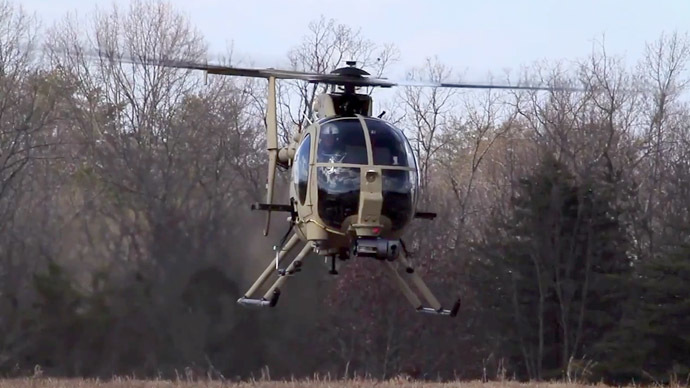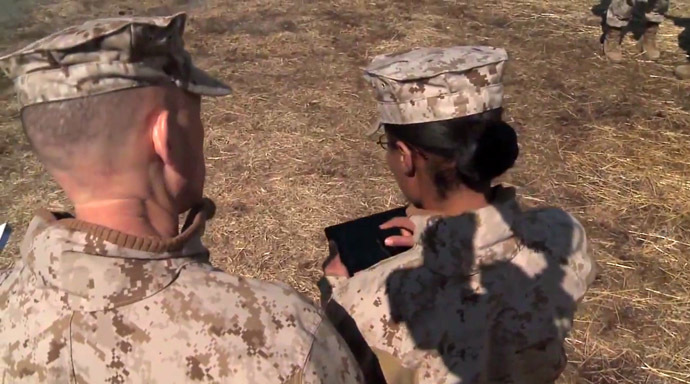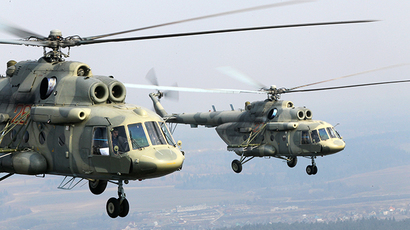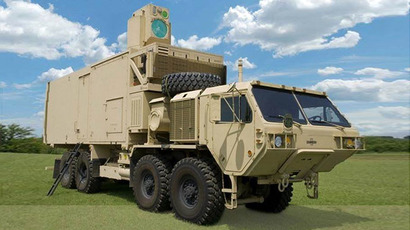Navy to fly drone helicopters from tablet app

The Pentagon is pushing the envelope yet again with a new $100 million, five-year program that aims to turn assorted military helicopters into a fleet of autonomous unmanned choppers.
When all is said and done, the program is expected to give United States troops another advantage in the battlefield by allowing them the ability to fly in choppers hauling valuable cargo without risking the lives of American pilots.
According to Pentagon officials, the military is already making immense progress with the Autonomous Aerial Cargo and Utility System, or AACUS program, and Rear Adm. Matthew Klunder — the US Navy’s chief of research — told the Wall Street Journal that recent advances are an example of “truly leap-ahead technology.” Officials told Reuters that the system has been tested on three different types of helicopters already.
In a video uploaded to YouTube by the Navy this week, the Naval Research Laboratory demonstrated how the addition of a 100-pound sensor and software package to different types of rotary wing aircraft, both manned and unmanned, can transform those vehicles into cargo-carrying drones that can then be controlled remotely using an iPad-like tablet computer.
This technology, the Navy said on their YouTube page, “will provide the US Marine Corps with the ability to rapidly support forces on the front lines, as an alternative to convoys, manned aircraft or air drops in all weather and possibly hostile conditions, with minimal training required by the requester.”
"What we're talking about doing with full size helicopters — and we've done it — we're talking about delivering 5,000 pounds of cargo," Klunder told the Journal.
Indeed, Klunder recently told attendees at a Pentagon conference that troops have “with one touch of a mini-tablet in their hand . . . been able to autonomously land a full-sized helicopter onto an unprepared landing site,” according to the US Defense Department’s science blog.
“Klunder says this system is one that could be put on an unmanned drone, or it could be put on a manned helicopter; it doesn’t matter. It’s easily installed, easily used and easily learned. Which is pretty incredible,” continued a post published Monday this week on the Pentagon’s “Armed With Science” blog. “I have Ikea furniture that’s more complicated than that,” added the author of the post.
“As far as innovative projects go, I can’t think of one that’s more important to the Marine Corps right now—or one that shows as much promise,” Brig. Gen. Kevin Killea, commander of the Marine Corps Warfighting Laboratory, told the Journal. "It's taking unmanned aerial systems to the next level by introducing autonomy, and autonomy that works," he said in a separate statement offered to reporters this week.

According to Reuters journalist David Alexander, aircraft equipped with the new high-tech detection sensors programmed to guide AACUS-enabled choppers can guide themselves through the sky and pick their own landing spots, but anyone with access to the tablet that controls the craft can easily be trained in a few minutes in order to send alternate instructions when an extra layer of human oversight is needed.
Pentagon officials hope that the self-reliant choppers will provide troops in need with a new option when it comes to ordering supplies and assistance while on the battlefield. Reuters cited an Army study that determined that one person was either killed or wounded for every two-dozen fuel resupply convoy in Afghanistan, and one was killed or wounded for every 29 water supply convoys.
Those statistics will likely change once troops will be able to order fresh shipments by using an easy-to-understand tablet program that tells a sensor and software-equipped helicopter to navigate safely into the field and drop off supplies.
According to Reuters, Klunder said the entire program could be ready to be rolled out within the next two years.
"If that need was there and required," he said, "the technology is what's important and we've proved that it works."
The Navy is expected to reveal further details about the AACUS at the Sea-Air-Space Conference in Washington, DC scheduled for this Tuesday.














